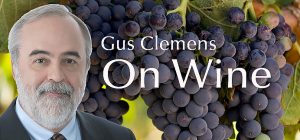Good news, bad news, an interesting wine factoid:
• Good news. The European wine shortage panic is past. After the Organization of Vine and Wine direly warned global wine supplies would “dramatically tighten” after various weather and other natural events significantly reduced grape production in 2017, there was a salutary rebound in 2018: an increase of 17% over 2017 and the highest production since 2000.
Italy, with 54.8 million hectoliters—up 29%—made the most wine for the fourth year in a row. France was second with 48.8 million hectoliters, up 34%; Spain third with 44.4 million hectoliters, up 37%. A million hectoliters is equal to more than 133.3 million bottles of wine.
• Bad news. Nature threw a weather curve ball at Santorini, the Greek island in the Aegean Sea that makes remarkable wine in a remarkable way. Too much rain. Typically, Santorini receives 11 inches a year. The first three months of 2019, Santorini received twice that.
Santorini’s assyrtiko vines are trained to grow in a low-lying basket form (kouloura) that protects them from hot, fierce, drying winds and captures water from the Aegean fogs that roll in almost every night and give Santorini wines their distinctive saline element. Too much rain and the kouloura shape promotes mildew and threatens crops. A Santorini wine executive dolefully noted: “All wine growers are prey to the weather, but here on Santorini we are more vulnerable than most.”
• Interesting factoid. How many bottles of wine can be made from a single vine? There is no neat answer. Depends on the variety, the soil, how it is farmed, and—of course—the weather.
For a premier cru supérieur Château d’Yquem sauternes, answer likely is one vine, one bottle. For industrial, jug wine vineyards, answer can be 24 bottles. Your average quality bottle, say four to eight.
Tasting notes:
• Ferraton Père & Fils Côtes du Rhône Samorëns Rosé 2018: Serious rosé with brightness, acidity, touch of tartness and minerality enhances food-pairing value. $14-16 Link to my review
• Bouchard Père & Fils Pouilly-Fuissé 2016: Showcases chardonnay’s richer, deeper flavors; Pouilly-Fuissé is from Burgundy’s Mâconnais district in the Côte-d’ Or (“Golden Slope”). $28-30 Link to my review
• Stags’ Leap Winery Chardonnay, Napa Valley 2016: Complex, elegant, vibrant. Nice example of cool climate chardonnay with light oak, no malolactic fermentation. $25-31 Link to my review
• The Prisoner Wine Company Thorn Merlot 2014: Considerable ripe fruit, substantial alcohol, ample oak, palate-pounding flavor. $41-45 Link to my review
Last round: Two men walked into a wine bar. The third man ducked and did not get injured.

